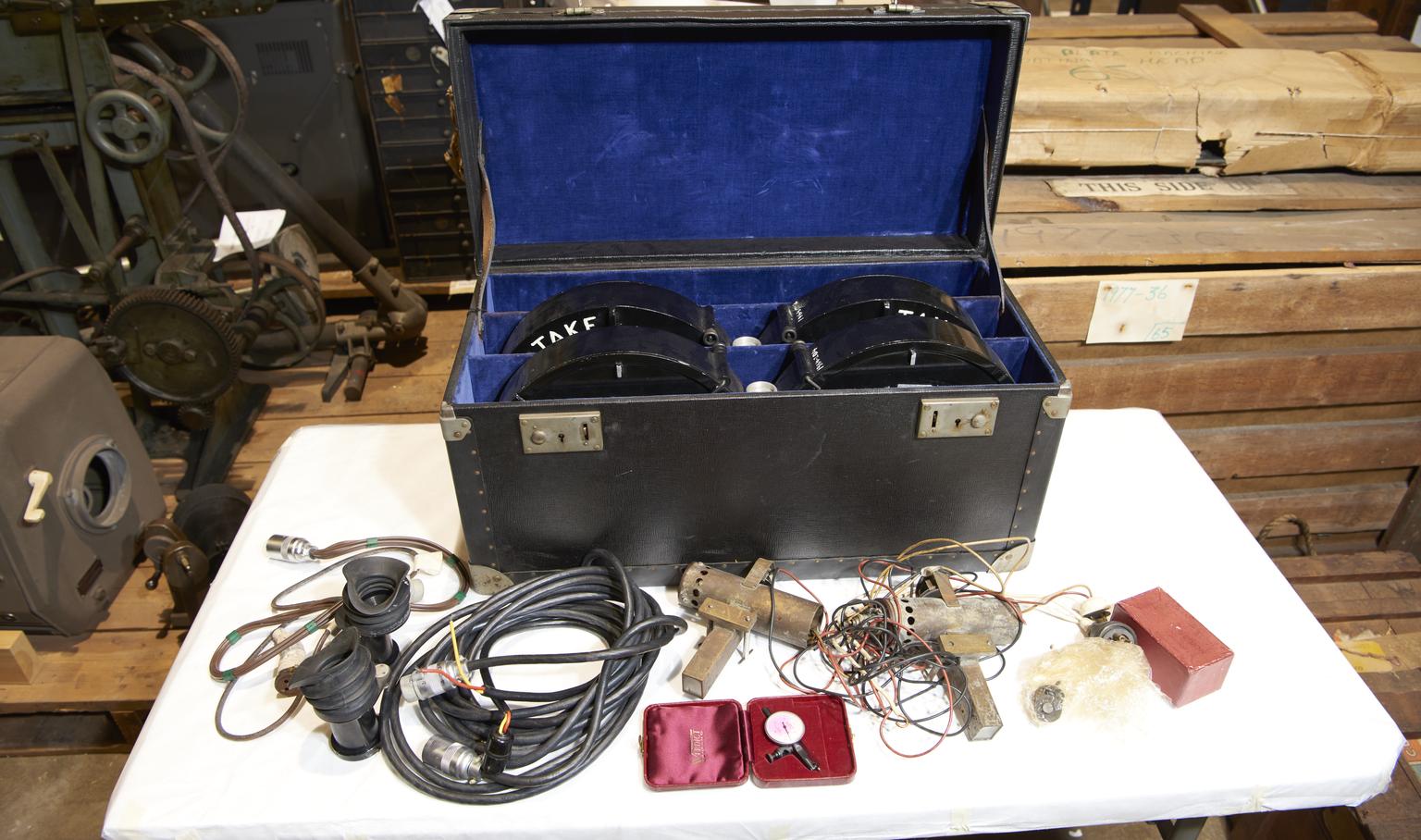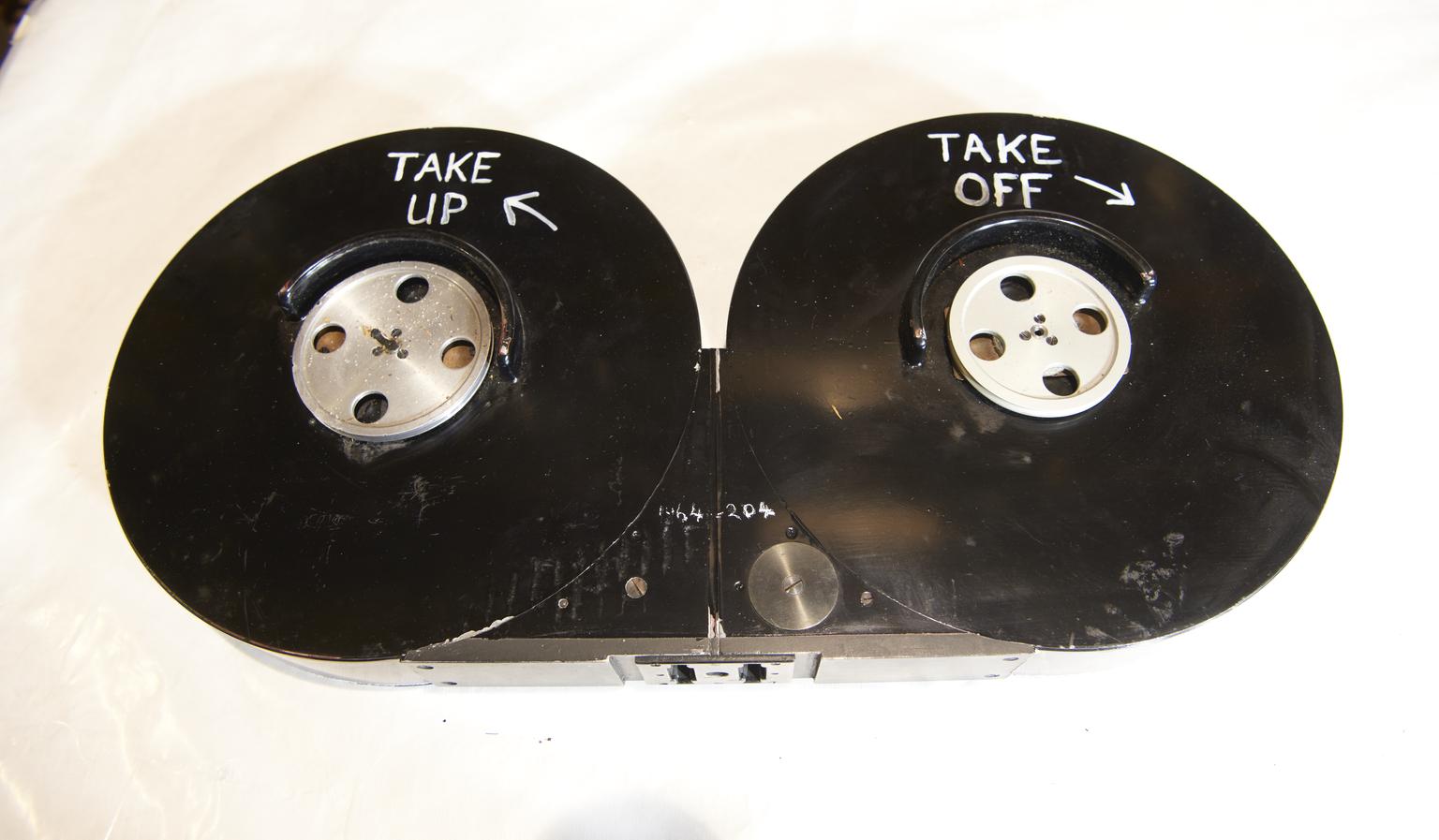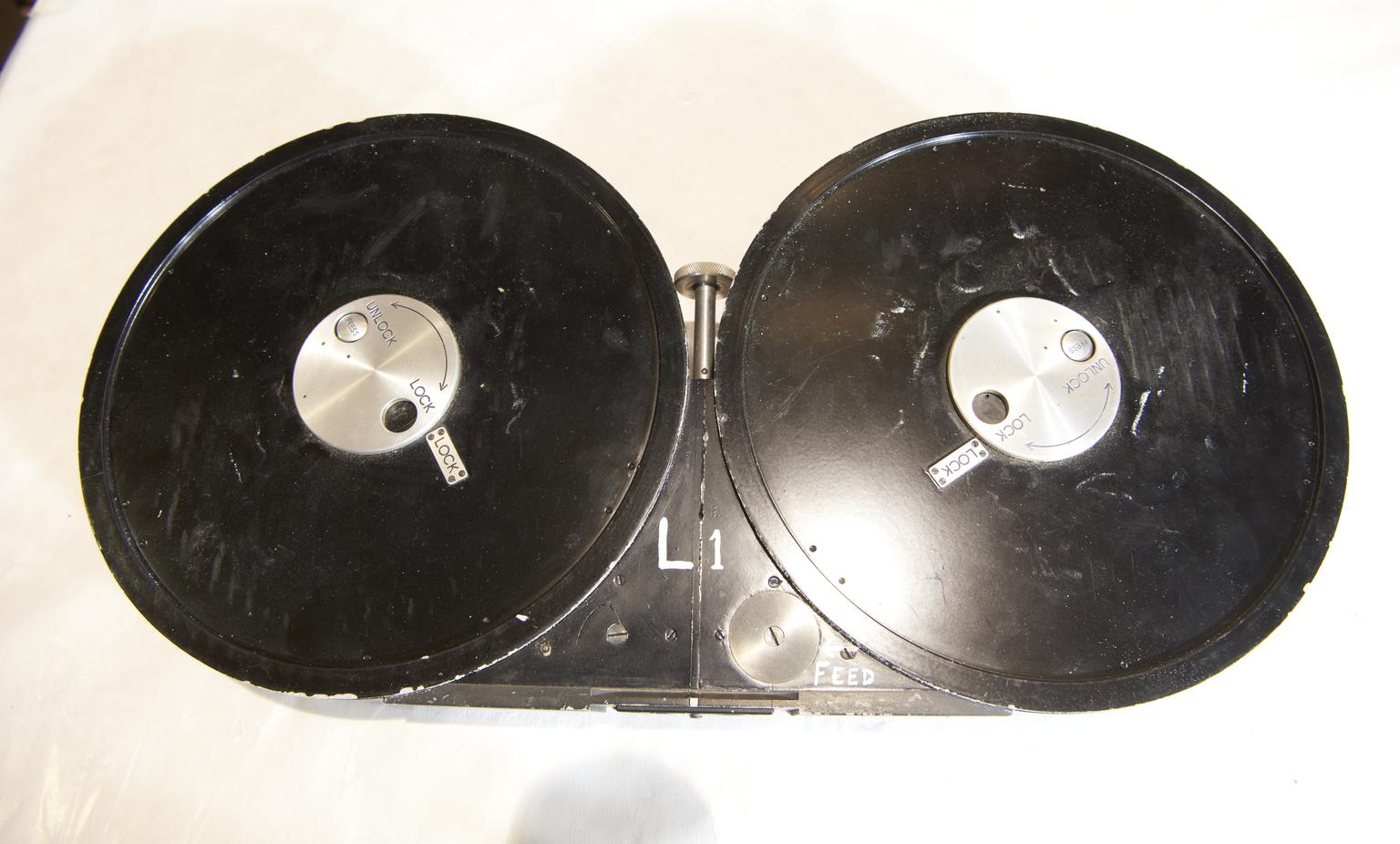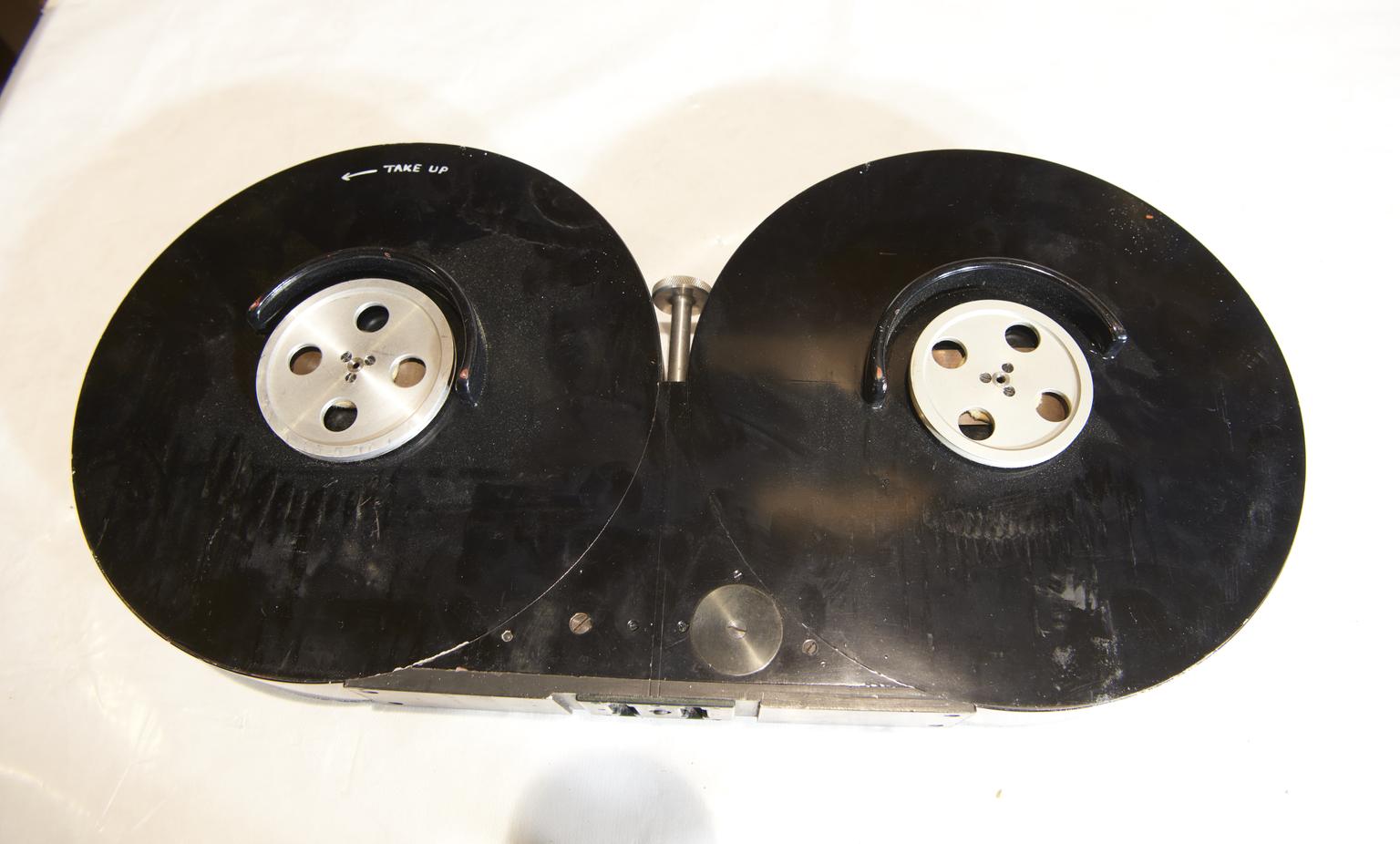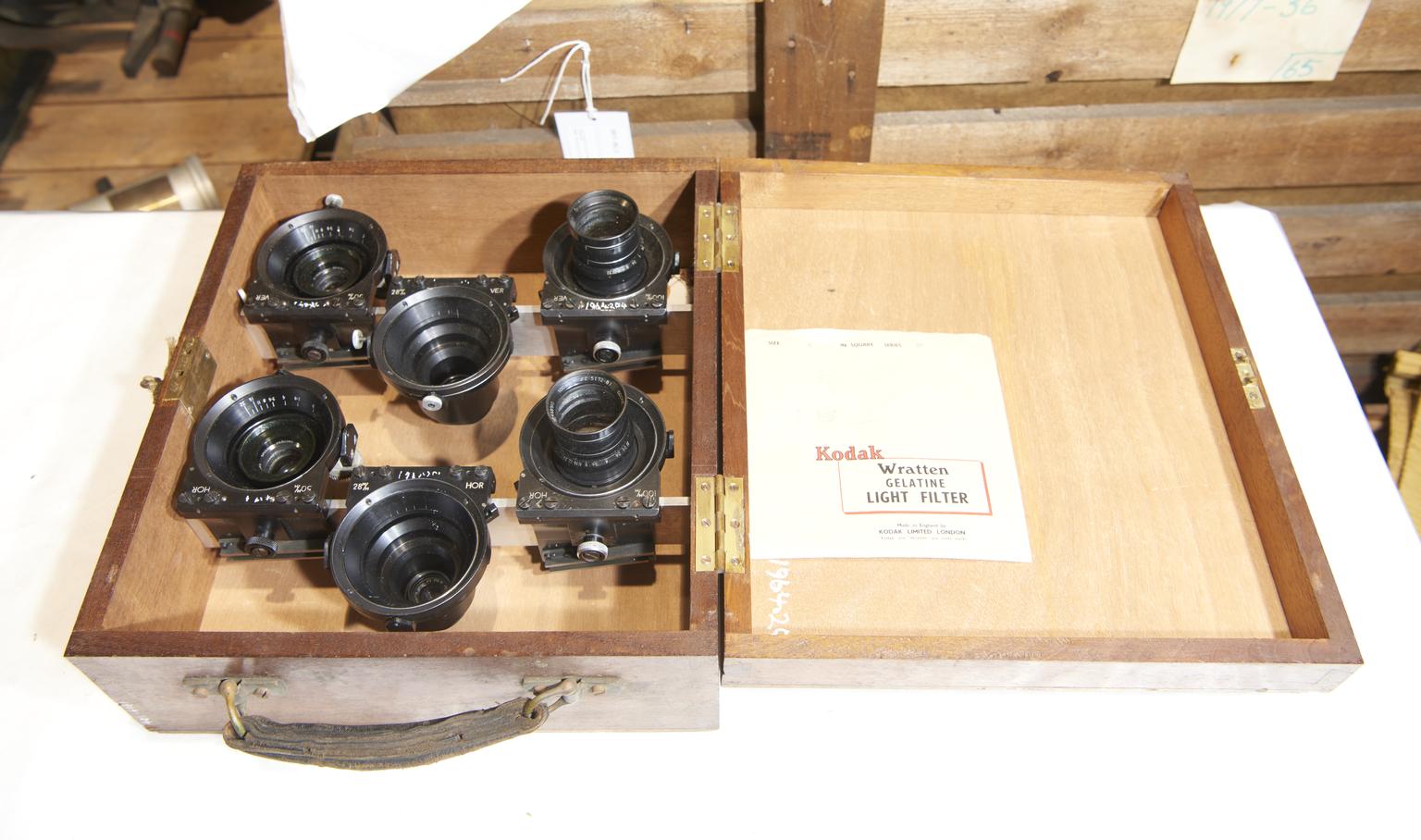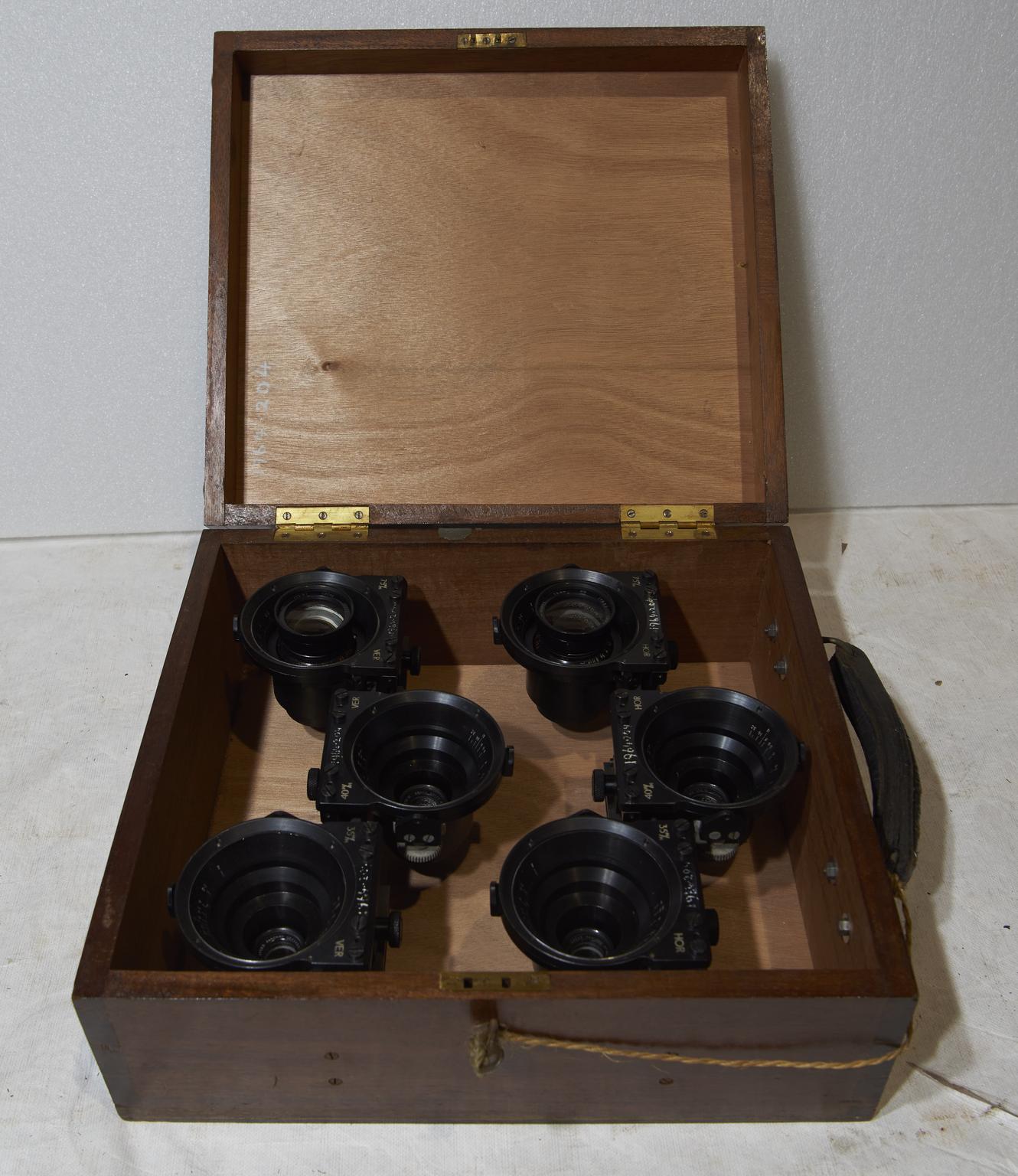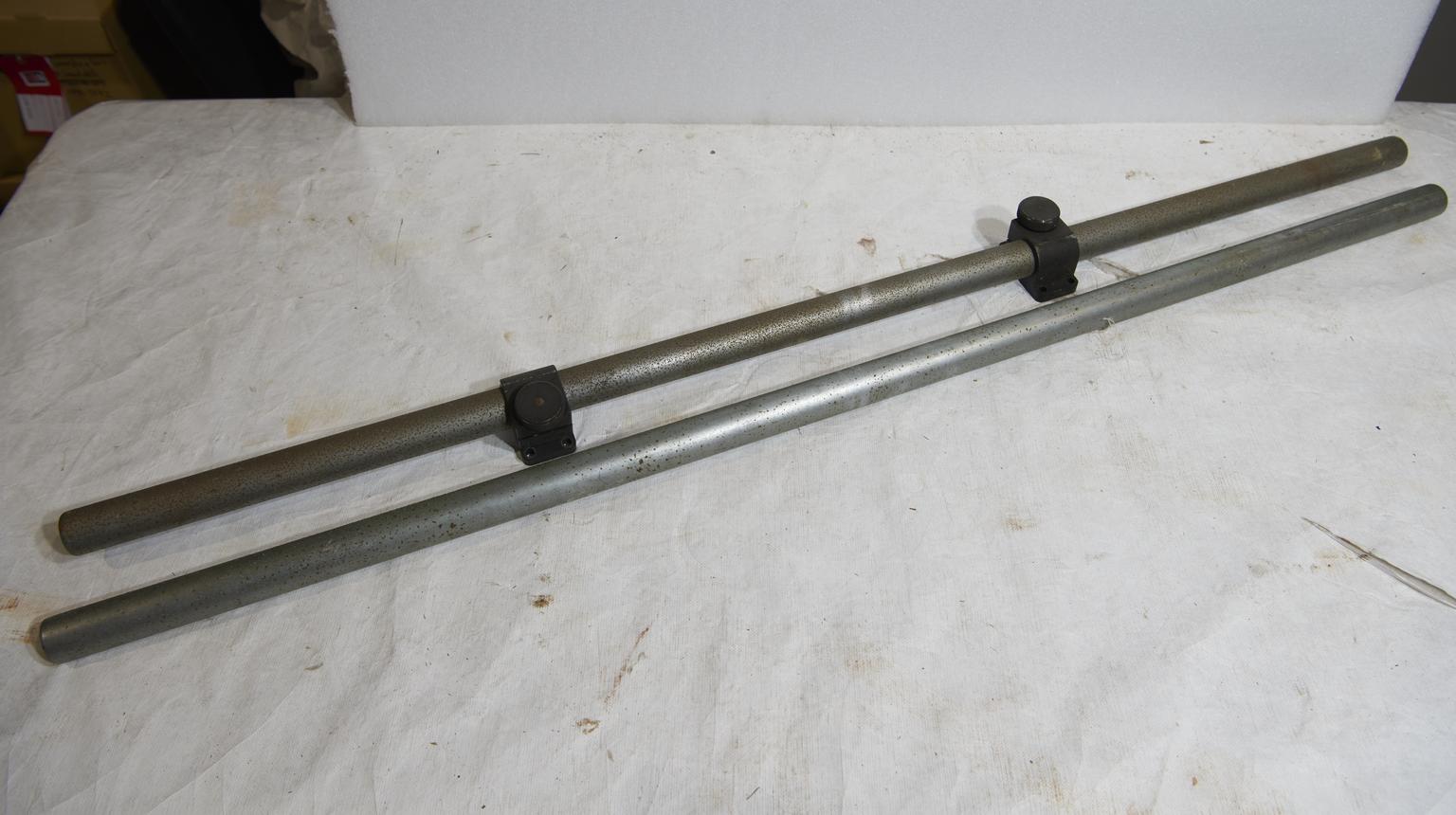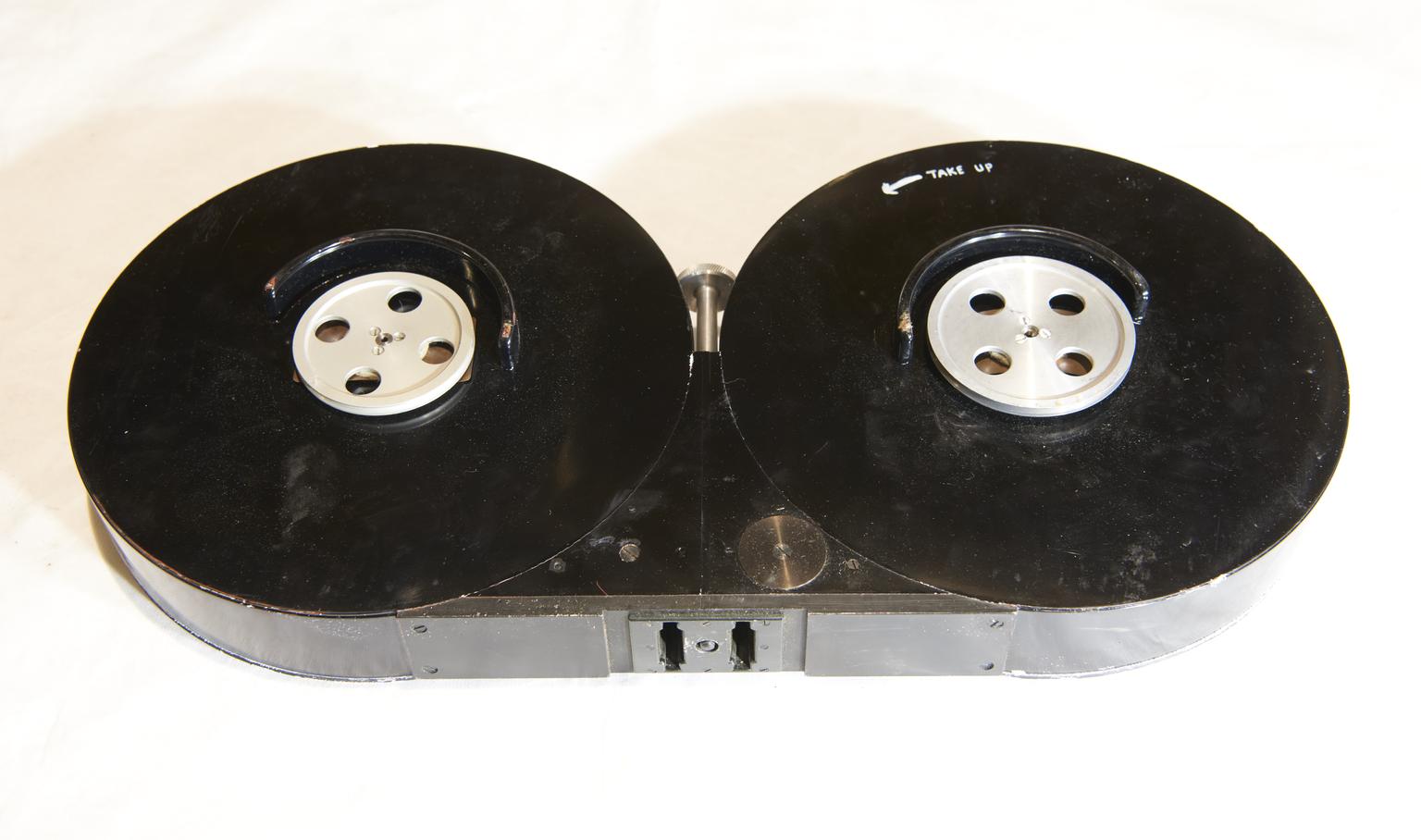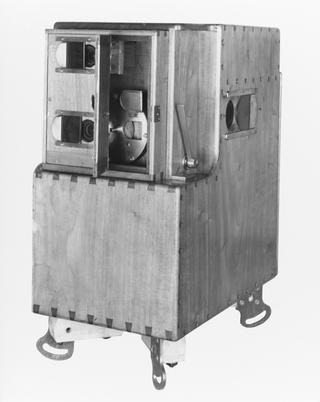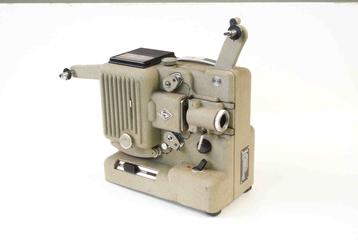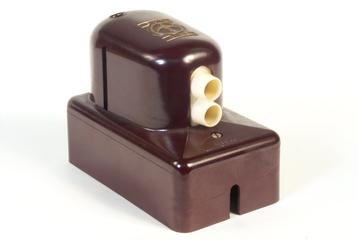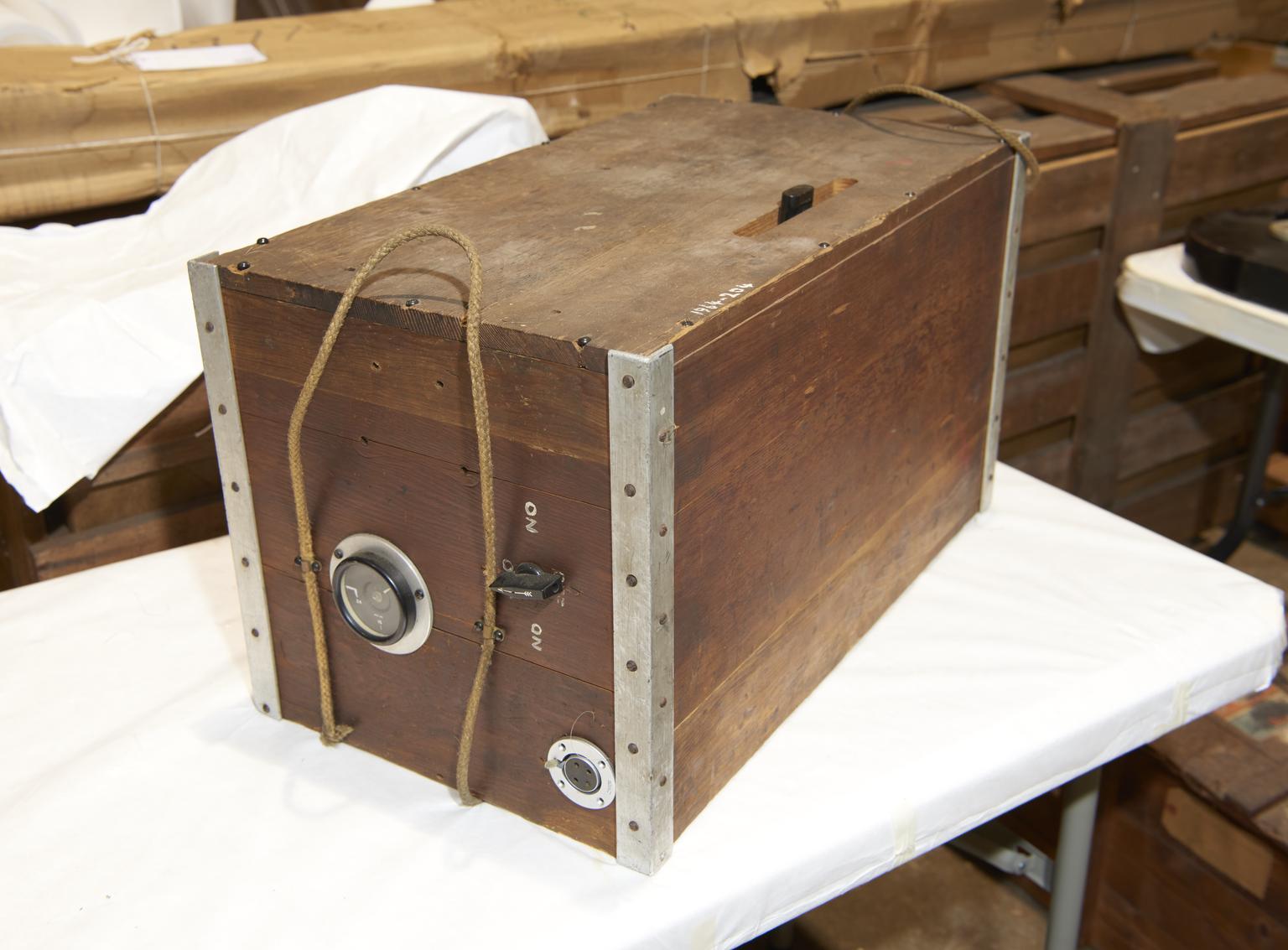
NRDC 35mm Stereo Cine Camera
NRDC 35mm stereo cine camera.
More
This camera recorded synchronised left- and right-eye images on two rolls of 35mm negative film in 1000ft magazines. The inter-axial separation of the lenses was variable from 5in to zero, giving full control of the stereoscopic effect. To achieve this, a semi-silvered reflector was used in front of the lenses. The left lens viewed directly through the mirror; the right shot vertically down,capturing the image reflected by the mirror through 90 degrees. This system was patented (BP 740927, 1953). The camera was used to shoot a colour documentary, Power in Perspective, by the Shell Film Unit. Scenes were shot in the Science Museum of small scale mechanical models utilising a narrow inter-axial distance to produce effective 3-D images - at that time there was no other camera in existence that could have done this.
- Object Number:
- 1964-204/1
- type:
- stereo cine camera
- Image ©
- The Board of Trustees of the Science Museum
